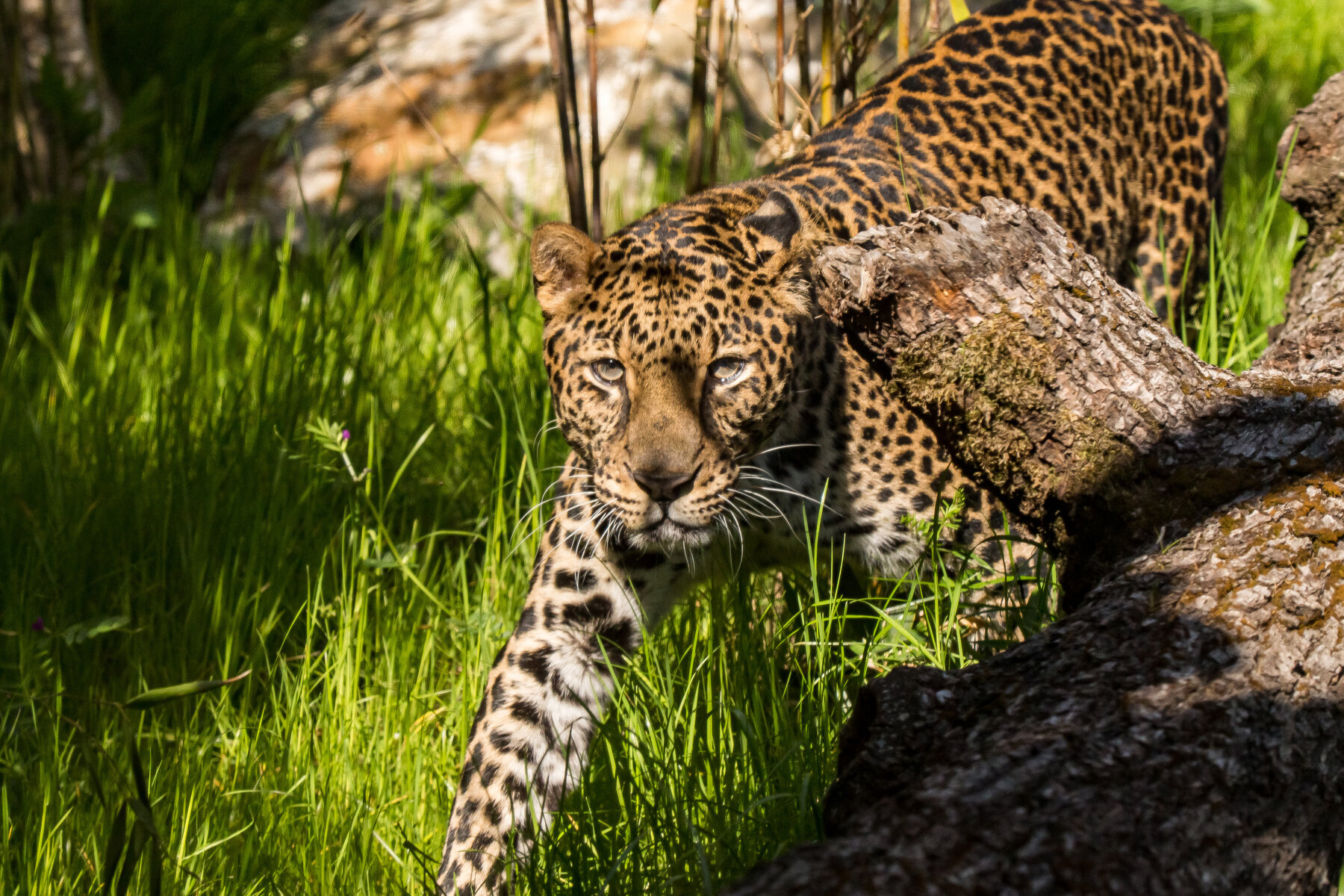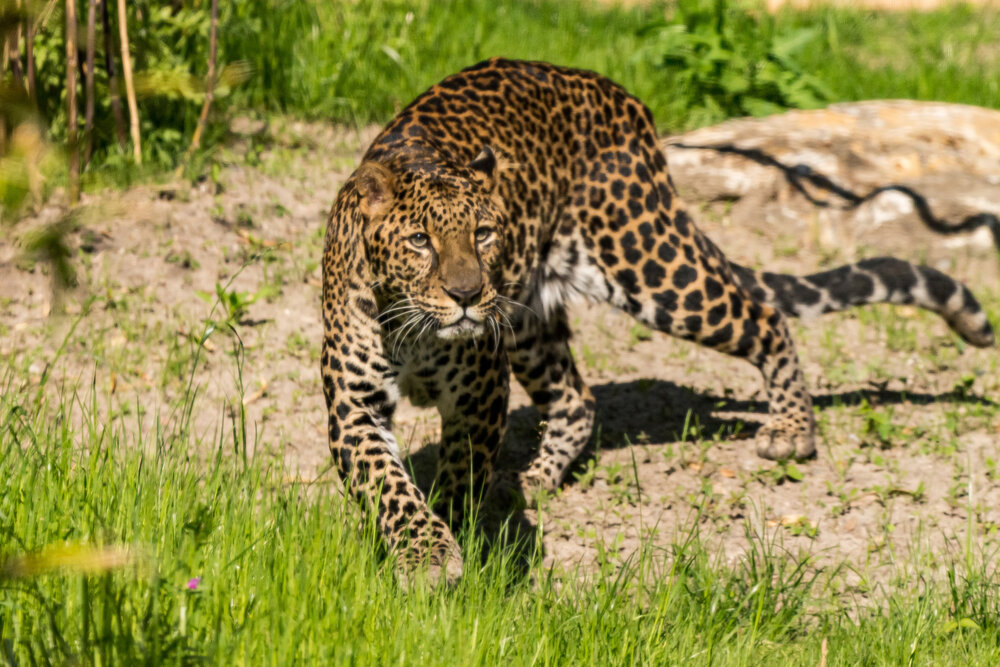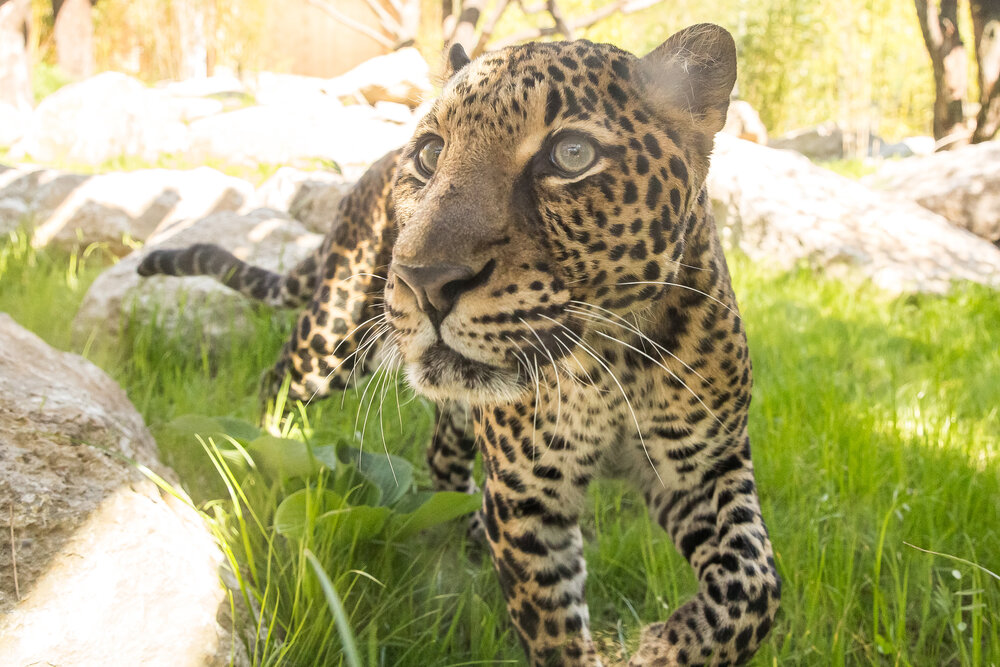
Javan leopard
Tierpark Berlin has supported efforts to protect the leopards of Java, Indonesia.
Project facts
- Project partner
Taman Safari Indonesia / KASI Foundation and Forum Konservasi Macan Tutul Jawa (FORMATA)
- Species
Javan leopard (Panthera pardus melas)
- IUCN threatened status
Endangered (EN)
- Project location
Java, Indonesia
- Greatest threat
Loss and fragmentation of habitat; human-wildlife conflict; poaching
- Response
Helping the Republic of Indonesia to implement a national action plan to protect the Javan leopard (2016-2026)
Threat Categories of IUCN


Javan by nature
Tierpark Berlin has been home to Javan leopards since 1985, and first successfully bred the species in 1991. The natural habitat of this endangered big cat is the Indonesian island of Java – the most populous island in the world. It is estimated that less than 14 percent of Java’s primary forest remains intact today. Worryingly, it is precisely this shrinking habitat that the Javan leopards need to survive.
A broken home
Fragmentation of habitat poses a huge threat to the few Javan leopards left in the wild. Without contiguous protected areas, the animals struggle to find a suitable mate and thus maintain a genetically diverse population. It is currently assumed that none of the Javan leopard subpopulations is larger than 100 individuals. This small population size could quickly become a major problem.
Deadly encounters with humans
Due to human population growth in Java, the number of conflicts between people and leopards has increased significantly since around 2003. Leopard attacks on pets are particularly common. In Gunung Sawal Wildlife Reserve, for example, ten incidents involving leopards were recorded between 2003 and 2016. These conflicts often end with the leopard involved being injured, caught in a trap, or killed. With an estimated Javan leopard population of just 200 to 400 animals, every death constitutes a real threat to the survival of the species. The IUCN therefore classifies the Javan leopard as “Critically Endangered”.
Protection through research
Before effective conservation measures can be established for the Javan leopard, studies are required to collect further data on the distribution of the animals, the quality of their available habitat, and the causes behind increasing human-wildlife conflict. This research will also involve looking at the living conditions of the human population in the Gunung Sawal Wildlife Reserve.
Support from Tierpark Berlin
In 2016 and 2017, Tierpark Berlin supported a stocktaking project using camera traps as well as an investigation into human-wildlife conflict in the Gunung Sawal Wildlife Reserve in western Java. In 2018, an important workshop was organised with the financial assistance of Tierpark and Zoo Berlin, in which participants analysed the Javan leopard’s current population size and the quality of its habitat.
Building a national action plan
Workshop participants included representatives of Indonesia’s central Ministry of Environment and Forestry, local forestry authorities, and national parks. Other important contributions to the analysis were provided by Indonesian scientists and field biologists as well as population biologists from the IUCN’s international teams of experts. This new inventory was used as a basis for establishing priorities and developing recommendations for action, which will help the Ministry of Environment and Forestry to make decisions regarding the concrete implementation of the national action plan.



